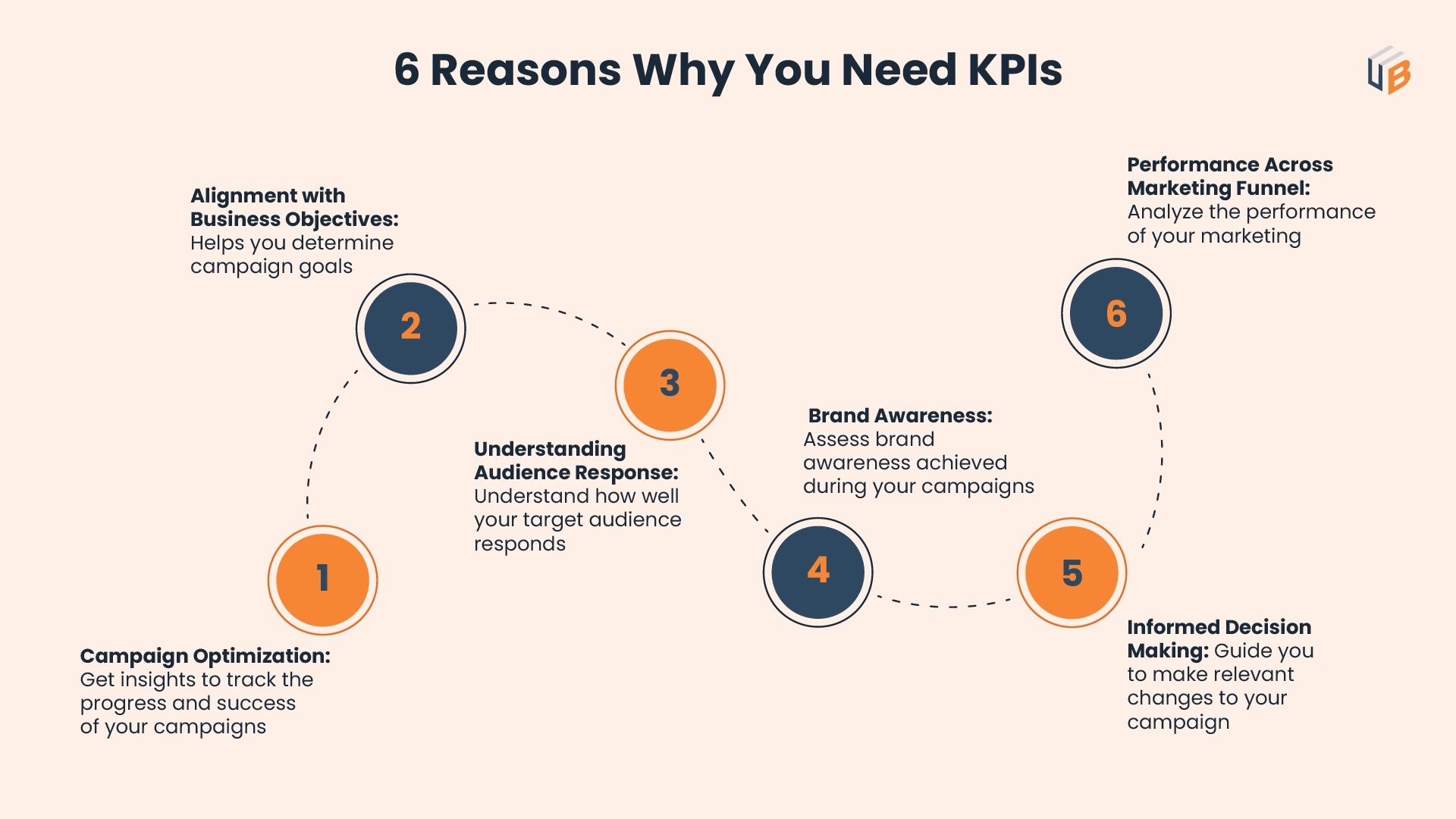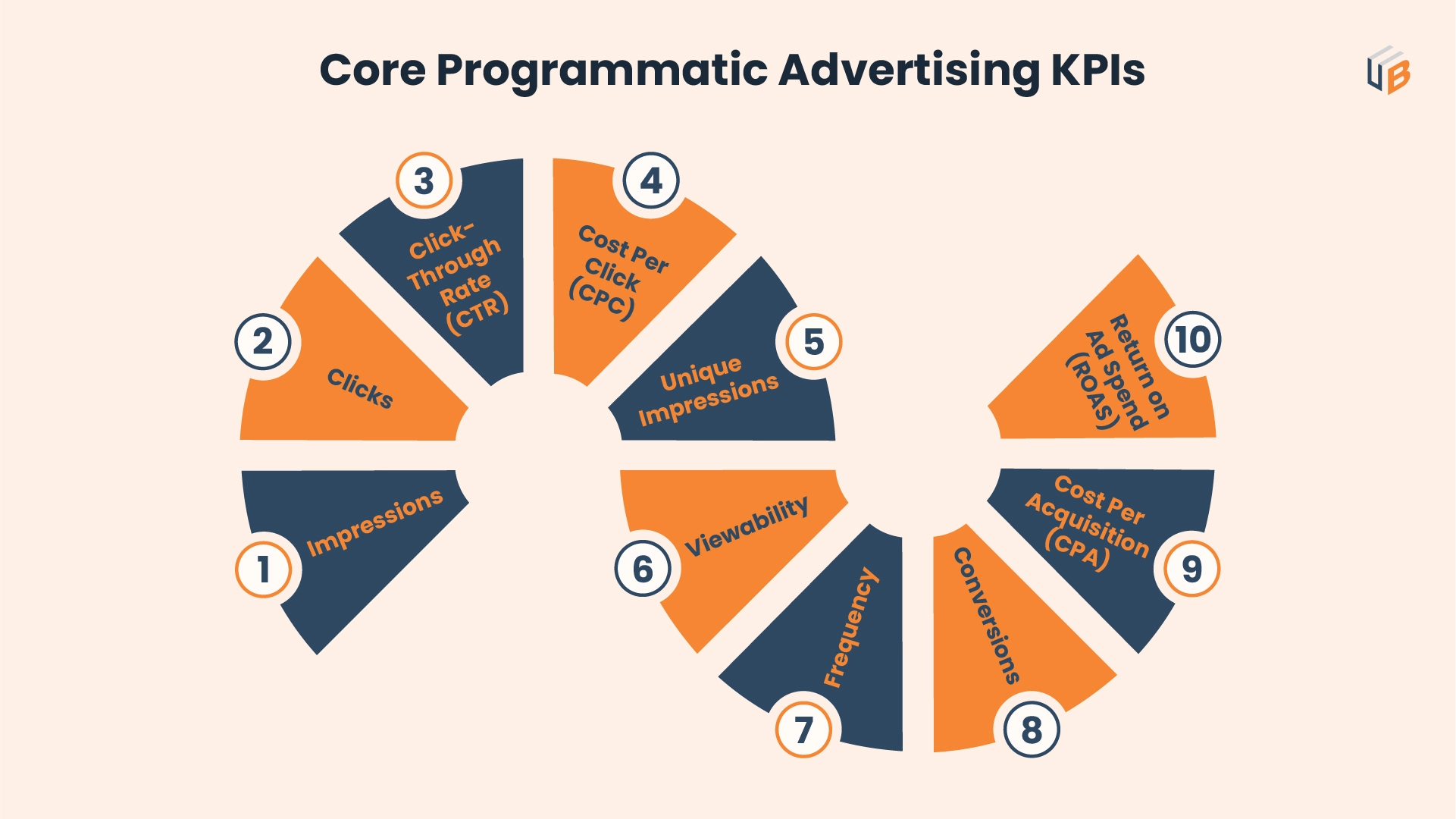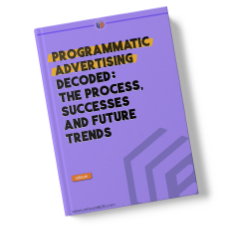
Introduction
With over 80% of digital display ads now purchased programmatically, this automated way of buying and selling ads enables organizations across industries to execute highly targeted and optimized cross-channel campaigns. Programmatic advertising employs algorithmic software to sell and purchase display spaces online via display, video, and native advertising.
With the ability to monitor metrics like impressions, clicks, viewability, frequency, conversions, CPA, and ROAS in real-time across platforms, programmatic advertising opens new possibilities for maximizing campaign performance. In this article, we’ll take you through the most essential programmatic advertising KPIs (key performance indicators) and how to leverage them at each stage of your ad campaigns to drive maximum success.
A Brief Definition of Programmatic Advertising
Simply put, programmatic advertising is described as an automated method of sales and purchase of digital advertising space. With the aid of marketing software, you can easily automate the bidding on your ad impressions. Then, optimize your ads based on the programmatic advertising KPIs that matter most, such as targeting, budgets, and timing. Programmatic display advertising allows data-driven ad placements and hyper-customization in a matter of seconds.Why is It Important to Track the Right Programmatic Advertising KPIs for Optimized Campaigns?
As an advertiser, you must be able to measure the effectiveness of your programmatic advertising campaigns by tracking the right KPIs. Here are some reasons it is important to track these metrics:

1. Campaign Optimization
Your key performance indicators allow you to track the progress and success of your programmatic advertising campaign. These KPIs provide you with insights into how to optimize your campaign or make changes that could improve your results.
2. Alignment with Business Objectives
The KPIs you measure should align with your business objectives. Before determining your KPIs, you need to determine what you want your programmatic advertising campaign to accomplish and what audience you are targeting. Your set goals inform you on which KPIs you should track.
3. Understanding Audience Response
When seeking to understand how well your target audience responds to your ads, metrics like clicks come in handy. The higher the number of clicks, the more engaged your audience is with your ad content, and the more likely they are to convert later. You can also reliably implement different audience targeting methods if you know which KPIs to track.
4. Brand Awareness
Impressions are a vital metric to track to understand how often your ads are displayed across third-party sites.
5. Informed Decision Making
Implementing KPIs can put you a step ahead of your competitors. How? It allows you to make quick and agile decisions – an invaluable tool in the current fast-paced, competitive post-pandemic marketplace.
6. Performance Across Marketing Funnel
KPIs can help you understand how your programmatic campaigns are performing across the entire marketing funnel.
Core Programmatic Advertising KPIs

1. Impressions
As you already know, your impression is a vital baseline metrics. And it is worth tracking. They help you calculate your brand awareness by indicating the number of times that your ad was displayed on a third-party site.
2. Clicks
If you want to know how your target audience responds to your ads, your ad clicks are handy. Quite straightforward, your ad clicks help to track the number of clicks your programmatic ads get, indicating engagement and interest. The higher the number of clicks, the more interest your product has, and this is one of the first steps in converting your ad viewers to customers.
3. Click-Through Rate (CTR)
CTR measures the percentage of people who click on your ad after seeing it. This metric is calculated by dividing the number of clicks your ad receives by the number of impressions (the number of times your ad was shown), then multiplying the result by 100 to get a percentage.
4. Cost Per Click (CPC)
Cost per click measures the average cost of each advertising click. That said, lower CPC means cheaper clicks, which further indicates cost efficiency. When you monitor your CPC, it helps to control your spending while maximizing clicks within your budget.
5. Unique Impressions
Unique impressions measure the number of unique individuals exposed to your advertising campaigns. With this, you will be able to identify your true campaign reach versus repeat impressions of the same users. Higher unique reach signifies an increase in your ad exposure.
6. Viewability
Viewability tracks the percentage of impressions that were actually seen by users. Having a higher viewability shows that your ads are gaining increased visibility. This result can be used to improve the effectiveness of your ad campaigns.
7. Frequency
Frequency is simply the average number of times each user is exposed to your ads. You must balance the frequency of your ads as it is a surefire way to prevent oversaturation while ensuring sufficient ad exposure.
8. Conversions
In programmatic advertising, your ad conversion refers to the desired action that a user takes after clicking on an ad. This could be anything from making a purchase, signing up for a newsletter, downloading an app, or any other call-to-action that aligns with the goals of the advertising campaign.
The process typically involves the following steps:
- A person visits a website
- The website owner puts the ad impression up for auction (SSP)
- Advertisers offer bids for the impression (DSP)
- The highest bidder wins the ad impression
- The ad is served on the website to the user
- The user clicks on the ad and converts
Conversions are crucial in programmatic advertising as they indicate the effectiveness of an ad campaign. They help you understand whether your ads are compelling enough to drive users to take the desired action.
9. Cost Per Acquisition (CPA)
CPA measures the cost to acquire each desired conversion. This is a key performance indicator for direct-response campaigns focused on driving specific actions. Lower CPAs mean greater efficiency in driving conversions profitably.
10. Return on Ad Spend (ROAS)
ROAS refers to revenue or conversions generated per dollar of ad spend. It quantifies how much value campaigns return for your investment. Higher ROAS equals higher efficiency in your marketing budget and profitability. Like CPA, ROAS is critical for performance-driven efforts. It is worth noting that this programmatic KPI has a different ROI because it explains the return on a single ad campaign instead of the entire investment. To calculate ROAS, you need to divide the total ad-generated revenue by the amount spent on the ad.
If you are looking to implement B2B advertising services in your business, learn how B2B advertising services can help you!

Best Practices for Setting Goals and Benchmarks
1. Research Industry Averages in Your Niche
If you want to succeed with your programmatic advertising KPIs, you must clearly understand the digital advertising benchmark metrics in your industry. This will help you define the right starting point as you begin to set your specific and measurable goals for your programmatic campaigns. So, you must review industry averages in your niche as it offers a helpful context on what may be reasonable, and it also serves as a competitive target performance for major KPIs like CPC, CTR, and conversion rates based on current benchmarks.
2. Set Specific Targets Based on Campaign Objectives
Rather than taking a blanket approach across all metrics, you must set your own specific KPI goals. You should also set targets that align directly with your campaign purposes and desired results.
For instance, if you aim to drive new customer sign-ups with your campaigns, set digital advertising goals for conversion rates or cost per acquisition for new account creation. Your programmatic benchmark should be highly realistic and achievable based on historical campaign data or industry advertising benchmarks. The more granular you can get in matching these key goals with your campaign objectives, the better.
3. Use Historical Performance as a Baseline
In addition to researching what’s obtainable in your industry, you can further customize your KPI goals by analyzing the historical performance of your own past campaigns as a comparison baseline. Look at metrics like impressions, CTR, and conversions to see how they match programmatic advertising trends over time. This can point to seasonality effects, provide expected ranges based on your specific ad formats/placements, and account for unique circumstances.
4. Continuously Test and Optimize
Programmatic advertising is dynamic. That’s why it allows constant testing and optimization to improve the performance of your programmatic advertising KPIs progressively. You must continually evaluate your metrics against your clearly set goals, test new strategies to boost performance, monitor your results, and adjust your goals and programmatic benchmarks accordingly over time. To succeed with your programmatic KPIs, you must treat your goal setting as an ongoing process rather than a static target.
5. Tying KPIs to Ad Platform Analytics
Bringing together all your programmatic advertising data into one place is essential for seeing the complete picture. When running programmatic campaigns across multiple platforms, those metrics can get fragmented quickly. Before you know it, you’re jumping between 5 different dashboards trying to manually piece together how your campaigns are performing. Data Management Platforms (DMPs) and Demand Side Platforms (DSPs) are two platforms that can help you manage your programmatic campaigns more effectively.
6. Connecting metrics across platforms
To gain a comprehensive understanding of the performance of your campaigns, you can connect metrics across platforms. Use a cross-channel reporting tool to connect all your data sources. This allows you to collect and compile data from various sources, such as social media, email marketing, paid advertising, and website analytics, into a single dashboard or report. Examples of these tools include UnboundB2B.com (Other tools/competitors include Moz Pro, Whatagraph, Klipfolio, Google Analytics, and more.)
7. Custom Reporting for Unified Insights
Build custom reports to show the specific KPIs you care about most for your goals. Custom reporting lets you organize and streamline the metrics that matter to you rather than generic pre-built reports.
8. Automating tracking with APIs
Work with marketing operations to identify the key metrics that need to be tracked and reported on. This could include metrics like impressions, clicks, conversions, and ROI. Also, select the right tools that can help track and report on these metrics. This could include programmatic advertising platforms, web analytics tools, and reporting tools.
Next, integrate the APIs from these tools to automate tracking and reporting. This will enable real-time monitoring and optimization of campaigns. With this, you can build custom reports that will provide insights into the performance of programmatic advertising campaigns. These reports should be easy to understand and provide actionable insights.
Setting up those APIs eliminates manual exports and refreshes. As soon as new data comes in, it’s right there in your system via the magic of automation!
The bottom line – do not allow the complexity of programmatic data to slow you down. With the right reporting approach, you can cut through the chaos, see what’s working, and optimize toward your KPI targets faster. A streamlined view of your key metrics is campaign intelligence gold!
Essential Programmatic Advertising KPIs for Critical Campaign Stages
Whether your programmatic campaigns are focused on mature and mid-funnel prospecting or early funnel channels such as paid search or social media marketing, KPIs are powerful tools to help you get a clear understanding of the performance of your programmatic metrics across the entire marketing funnel.
If you want to learn about real-time case studies and future trends in programmatic advertising, do not forget to check out UnboundB2B’s programmatic advertising ebook for free.

The Bottom Line
Programmatic advertising provides a wealth of data, but focusing on the right KPIs is crucial. Start with impressions, clicks, and conversions to gauge early traction. Use CTR, CPC, unique impressions, viewability, and frequency to optimize engagement and audience targeting in the middle stage. For mature campaigns, monitor CPA and ROAS to maximize ROI.
Continually track KPIs tailored to each campaign’s evolving lifecycle. Set specific advertising benchmark goals based on historical data and industry research. Leverage cross-channel analytics and custom reporting for unified insights. With the ability to monitor programmatic metrics in real-time across platforms, programmatic provides immense opportunities to actively enhance performance.
The key is identifying the core set of KPIs aligned with your campaign objectives and diligently analyzing the data to uncover optimization opportunities. Therefore, you should not get overwhelmed by the programmatic metrics – instead, be intentional. With the right KPI insights, you can efficiently guide each campaign to success.
Speaking of being overwhelmed, if you’re new to paid marketing, you need to learn what programmatic advertising is all about. To do so, you can read our Programmatic Advertising 101 Guide.
Boost your marketing outcomes with B2B advertising solutions! Explore UnboundB2B’s paid marketing services for enhanced marketing ROI.
Our blog
Latest blog posts
Tool and strategies modern teams need to help their companies grow.

Our definition of marketing success in B2B is evolving. For years, traditional metric...

Video has emerged as one of the most effective tools to cut through the noise and con...

The way B2B buyers research, engage, and decide has changed and so must the way marke...






